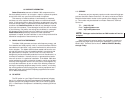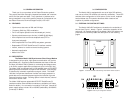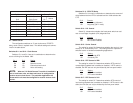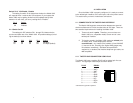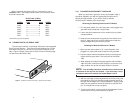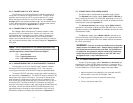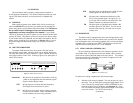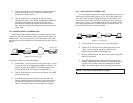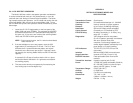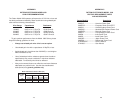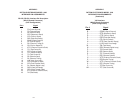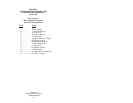
11 12
4.2.2 CONNECTION TO A “DTE” DEVICE
The serial port on most QuickConnect™ interface modules (all
except the X.21 module) is hard-wired as a DCE. Therefore these
modules “want” to plug into a DTE such as a terminal, PC or host.
When making the connection to your DTE device, use a straight
through cable of the shortest possible length—we recommend 6 feet
or less. When purchasing or constructing an interface cable, please
refer to the pin diagrams in Appendix D as a guide.
4.2.3 CONNECTION TO A “DCE” DEVICE
If the Model 1093’s QuickConnect™ interface module is hard-
wired as a DCE (all except the X.21 module), you must use a
null
modem
cable when connecting to a printer, modem, multiplexer or
other DCE device. This cable should be of the shortest possible
length—we recommend 6 feet or less. When purchasing or construct-
ing a null modem interface cable, use the pin diagrams in Appendix D
as a guide.
4.2.4 RECONFIGURING THE X.21 QUICKCONNECT™ MODULE
The serial port on the X.21 QuickConnect™ Module is default
wired as a DCE, but may be switched to a DTE. This is done by
reversing the orientation of the DCE/DTE strap, as described below:
To reverse DCE/DTE orientation, remove the module according to
the instructions in Section 4.2.1. The DCE/DTE strap is located on the
bottom side of the module’s PC board. The arrows on the top of the
strap indicate the configuration of the X.21 port (for example, if the
DCE arrows are pointing toward the DB-15 connector, the X.21 port is
wired as a DCE). Reverse the DCE/DTE orientation by pulling the
strap out of its socket, rotating it 180º, then plugging the strap back into
the socket. You will see that the DCE/DTE arrows now point in the
opposite directions, showing the new configuration of the X.21 port.
Reinstall the module according to the instructions in Section 4.2.1.
4.3 CONNECTION TO THE POWER SOURCE
The Model 1093 is available with three power supply options:
The Standard power supply option (Model 1093 or 1093-230) is
factory configured for either 115 or 230 VAC, depending on how the
product is ordered, and is available with a variety of domestic and inter-
national power cords (see Appendix C).
The Universal Interface power supply option (Model 1093-UI)
operates in environments ranging from 85 to 265 VAC, with no re-con-
figuration necessary (see Appendix C for available domestic and inter-
national power cords).
The DC power supply option (Model 1093-DC) operates in 48
VDC environments and is equipped with a 3-pin terminal block with
spring-type contacts (please refer to the Model 1093 Service Manual
for wiring instructions).
4.3.1 AC POWER CONNECTION
The two AC power supply options–Standard and Universal–are
equipped with a male IEC-320 power connection. A domestic (US)
power supply cord is supplied with the unit at no extra charge. To con-
nect the standard or universal power supply, follow these steps:
1. Attach the power cord (supplied) to the shrouded male IEC-
320 connector on the rear of the Model 1093.
2. Plug the power cord into a nearby AC power outlet.
3. Turn the rear power switch ON.
Note: Pin-out requirements for null modem applications vary
widely between manufacturers. If you have any questions about a
specific application, contact Patton Technical Support:
TEL: (301) 975-1007
Email: support@patton.com.
www: http://www.patton.com
WARNING! There are no user-serviceable parts in the power
supply section of the Model 1094. Voltage setting changes and
fuse replacement should only be performed by qualified serv-
ice personnel. Any questions may be answered by contacting
Patton Electronics Technical support at (301) 975-1007; sup-
port@patton.com; or http://www.patton.com.




